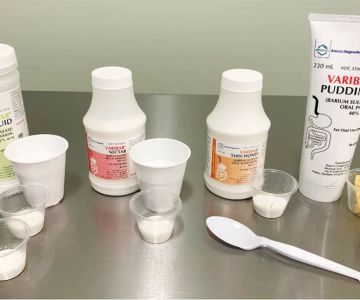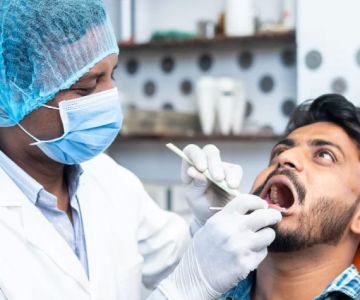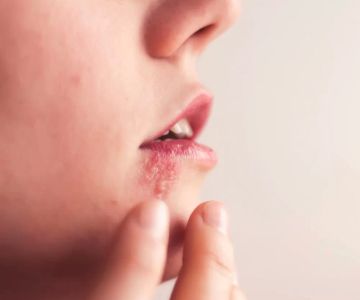Understanding the Role of the Health Department in Oral Health Checks
The health department plays a crucial role in monitoring and maintaining oral health standards across communities in the United States. Their inspections help ensure that dental clinics, schools, and public facilities comply with regulations aimed at preventing oral diseases and promoting good hygiene. This process is not only about evaluating dental care providers but also about safeguarding public health through community programs and education.
By conducting oral health inspections, the health department aims to detect potential risks early, enforce compliance with sanitation and safety protocols, and encourage preventive measures. These inspections often serve as the backbone for local policies targeting oral disease reduction, such as cavities, gum disease, and oral cancer.
Key Procedures in Oral Health Inspections by the Health Department
The inspection process typically begins with a review of the facility's adherence to regulatory standards. Inspectors assess sterilization methods for dental tools, cleanliness of treatment areas, proper disposal of hazardous waste, and the qualifications of dental professionals. Maintaining a hygienic environment is paramount to prevent cross-contamination and infection.
Next, inspectors may evaluate patient records to verify that routine oral health screenings and treatments are being performed appropriately. In community settings like schools, the health department may perform direct oral examinations on children to track dental health status and identify any widespread issues that need addressing.
Data collected during these inspections inform the department’s recommendations and actions, ranging from educational outreach to imposing fines or suspensions if violations are severe.
Scientific Tools and Methods Used in Oral Health Monitoring
Health departments employ a variety of scientific tools and techniques during oral health checks. This can include visual oral examinations using specialized mirrors and probes, fluoride varnish applications, and digital X-rays for in-depth analysis of dental conditions. These tools help detect cavities, plaque buildup, periodontal issues, and other abnormalities.
Additionally, epidemiological data collection is crucial. Surveying oral health trends within populations helps the health department allocate resources effectively and tailor public health campaigns.
The Impact of Health Department Oral Inspections on Public Health
Regular oral health checks by the health department contribute significantly to reducing the incidence of dental diseases and improving overall community well-being. Early detection of issues such as tooth decay and gum disease allows for timely interventions, which can prevent more serious health complications.
Furthermore, these inspections reinforce the importance of oral hygiene education. By collaborating with schools and local organizations, the health department promotes healthier habits that benefit individuals and reduce healthcare costs.
Challenges Faced During Oral Health Inspections and How They Are Addressed
One challenge in oral health inspections is reaching underserved populations who may lack access to regular dental care. The health department addresses this by implementing mobile clinics and community outreach programs. Another issue is ensuring compliance among a wide range of providers, from private practices to public institutions.
Training for inspectors is continually updated to keep pace with technological advances and evolving dental care standards. Transparency and communication with dental professionals also help in building trust and cooperation.
Real-Life Example: Health Department’s Role in School Oral Health Programs
In several states, health departments have launched comprehensive school-based oral health initiatives. For instance, a program in California involves regular dental screenings, fluoride treatments, and educational workshops for students. The data collected has led to a measurable decrease in childhood cavities and increased awareness among parents and teachers.
These programs exemplify how the health department’s proactive approach to oral health can foster lasting improvements in community health outcomes.







 Dr. Majd Babik, DDS4.0 (43 review)
Dr. Majd Babik, DDS4.0 (43 review) Dentistry At Suburban Square: Michael I. Wollock, DMD4.0 (1228 review)
Dentistry At Suburban Square: Michael I. Wollock, DMD4.0 (1228 review) Children's Dental FunZone - Pediatric Dentist & Orthodontist - Reseda4.0 (1371 review)
Children's Dental FunZone - Pediatric Dentist & Orthodontist - Reseda4.0 (1371 review) Oakdale Family Dentistry4.0 (45 review)
Oakdale Family Dentistry4.0 (45 review) Park Family and Cosmetic Dentistry5.0 (51 review)
Park Family and Cosmetic Dentistry5.0 (51 review) Elmwood Park Cosmetic Dentistry5.0 (1 review)
Elmwood Park Cosmetic Dentistry5.0 (1 review) The Importance of Oral Health Education During Pregnancy for a Healthy Pregnancy
The Importance of Oral Health Education During Pregnancy for a Healthy Pregnancy Best Tips for Brushing Your Teeth Properly for Healthy Gums: Essential Techniques for Oral Health
Best Tips for Brushing Your Teeth Properly for Healthy Gums: Essential Techniques for Oral Health Why Skipping Dental Checkups Can Lead to Bigger Oral Health Problems
Why Skipping Dental Checkups Can Lead to Bigger Oral Health Problems Advantages of Porcelain Dental Restorations
Advantages of Porcelain Dental Restorations How Can Diabetes Cause Tooth and Gum Problems? Preventing and Managing Oral Health Issues
How Can Diabetes Cause Tooth and Gum Problems? Preventing and Managing Oral Health Issues Healthy Habits for Promoting Good Oral Health and Hygiene: Tips for a Healthy Smile
Healthy Habits for Promoting Good Oral Health and Hygiene: Tips for a Healthy Smile